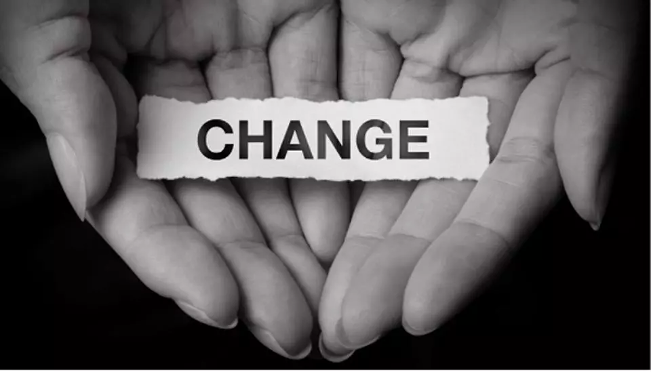Change Personalized
Sometimes, I wonder if we’re too academic, algorithmic, or process-oriented regarding organizational change. We can often lose sight of its nature. Change is done by one individual (person, human) at a time and is a uniquely personal journey.
I saw a post by Jay-Allen Morris that I want to share in its entirety because it moved me to consider change in this way—
I like the Virginia Satir Change Model that Joanne Perold shared last week, which got me thinking about my own change cycle.
I used to lift very heavy weights for my size at the gym. I enjoyed the idea of control and the ability to push my body further and further. I also liked feeling strong. My form was so good that a powerlifting coach approached me with an offer to train with him and eventually compete. My ego was so happy for many reasons.
Introducing the foreign elementThen I had a stupidly embarrassing fall where I tore the ligaments in my ankle which resulted in me being on crutches for weeks and it took another few weeks to learn to walk properly again. All I was focused on was getting back to the gym and lifting heavy again and feeling that sense of control.
I somehow told myself that the 4 physio sessions were enough and then I could get back to where I was. Getting back to where I was is what I cared about most — returning to that Old Status Quo. But it wasn’t enough, my body never felt the same and I struggled constantly with “not feeling right”. Then because of unfortunate events, I injured my other ankle and then the first one again.
It took me 6 years, 6 YEARS to make peace with the fact that I couldn’t just go back. 6 years of making peace with this foreign element and the feelings of “chaos” that it brought. 6 years to realise that I needed to move forward because all I was doing was standing still. And while I probably can go back to lifting heavy weights it’s not going to be exactly the same. I will have to make adjustments and notice where I might be compensating
So this year I asked myself:
How can I accept where I am now? (also thank you to my husband for prompting this)
If lifting weights is important to me, what do I need to do to get back into it?
What can a new reality look like for me?
Asking those questions led me to stop chasing what was and to focus on what is. By tuning into my body, I began noticing the imbalances I had ignored for so long. Instead of brushing them aside, I’m acknowledging where I am so that I can move towards a New Status Quo.
How often do we stop to think about how much energy we spend trying to go back?
We, or at least I, often trivialize the time it takes for change. There are many reasons, such as business context, leadership directives, or simply my impatience to…move forward.
It took Jay-Allen six years to accept a fundamental change in her life and move on to a new Status Quo.
How many agile organizational changes are at least as impactful as her physical change? I’d say many of them. The article reminded me of several things related to bringing people into our thinking on change—
We can’t predict how long it will take for each person to navigate the change.
We must meet everyone individually, respectfully, and patiently, and help them in their journeys.
The change will probably take longer than we imagine. The navigation period for a group or team is the most prolonged time for a single team member.
I would add Radical Acceptance to the Satir model’s Integration phase. I often superficially convince myself to accept the change as part of my integration phase. But I drop back into chaos if I don’t profoundly integrate or radically accept the change.
Another way I think about it is what I need to do to make the change sticky so that I don’t regress to the old status quo when I’m under pressure or stress.
Stay agile, my friends,
Bob.
Here's a link to Joanne Perold’s original post—


